What is Pad Y/X?
Everybody’s talking about Pad X and Y, or Pad Stack and Reach, in regard to bike fit and selection. What is it? How do you measure it? How is it used?
The diagram below shows you what it is. How do you measure it? I’ll tell you how I measure it, and then I’ll tell you why we use it in the world of bike fit, and when we use it, and how it helps us.
Here is how I measure it: Put your bike in a trainer. Level it. And I mean really level it! I hold a 4-foot long level up to the center of the front and rear dropouts to make sure the bike is level. Then, measure from the bottom bracket center (BB) to the ground, and from the top of the pads to the ground. I subtract the smaller number from the larger. That give me Pad Y.
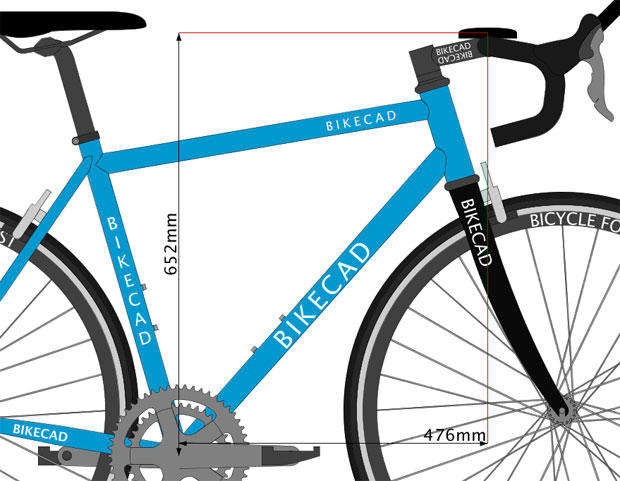
Why do I call it Pad Y? I could call it Pad Stack, but I like to preserve Stack and Reach as specific terms of art that relate to other measures. Pad Y refers to the Y axis, which is the vertical axis in geometry. The X axis is the horizontal axis (and some folks refer to Pad X as Pad Reach). How do you measure this? Drop a level or a plumb line through the bottom bracket and measure forward, horizontally, to pad center. This is usually best done with a helper – this is a 2-man job done accurately.
Some companies use Pad-rear instead of Pad-center. Retul uses Pad-rear in its reports. You have to add the distance from Pad-rear to Pad-center to get Pad Y and X from BB-to-Pad Center. Quintana Roo, Giant and Zipp also use Pad-rear, so if you use their charts you need to make sure you are using the back of the pad as your measuring landmark.
That’s WHAT it is, and how to measure it. WHY is it an important metric?
About the image below: Don’t freak out! Hang with me here! As you may know, we have a fit system we devised, it’s about 15 years old, it’s called F.I.S.T., it’s the father (or the mother) of the dynamic fit systems you see in the marketplace today. This system – especially the prescribing part of the system, where we tell you which bikes match your position – relies on breaking down all the elements of a bike that impact fit to X and Y (or length and height) dimensions. The most notable of these metrics are Stack and Reach and the long and short arms of that red right triangle in the image below are Stack and Reach.
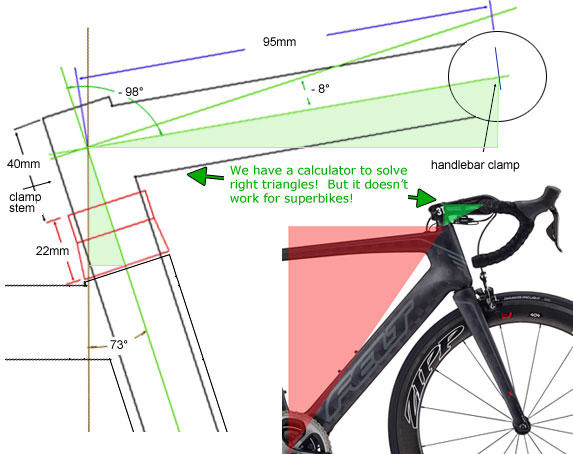
There’s a kind of super X and Y that we use in bike fit, which we call HX and HY, and this is the height and length from the BB to the Handlebar Clamp (where the handlebar passes through the stem). Many of today’s best fit bikes give the fitter HX and HY. When I fit you aboard a GURU or a Purely Custom fit bike (or Shimano’s new fit bike) the bike “tells" me your HX and HY. I then port these numbers into a calculator that tells me another X and Y component, namely the height and length (or Rise and Run if you like those terms better) of the stem, spacers, etc., between where the frame ends and the handlebar begins.
All this makes fitting and prescribing for road race bikes monumentally easy. But tri bikes are harder because you have a handlebar on top of a handlebar. Still, it’s not hard. Until you get to the integrated front end of a superbike! If I know the length of a stem, its pitch, and the height of the stem clamp that fits over the steer column, and a few other things, I can calculate the Rise and Run between the frame and the handlebar. No can do with the integrated, custom stems on superbikes like the Speed Concept or the Giant Trinity Advanced Pro. My calculator no longer works.
So we just bypass this altogether and, for these bikes, measure from the BB directly to the pad! Then each bike company that makes an integrated tri bike like this creates its own Pad Y/X matrix. Trek has one, and if you look on the Trek Speed Concept owners thread on our reader forum there are about 8000 posts, and in these posts people have found and selected their Speed Concepts by posting to the thread, “Hey, Carl, I’m 630mm and 505mm. What Speed Concept am I?!” And then Carl Matson, the engineer at Trek who is the face of the Speed Concept writes back, “You’re a Size Large, low/far stem, 35mm pedestal.” Then you rush to the Trek dealer, give them this, and they sell you the bike (or order it as a Project One). As well as I can tell, north of 500 Speed Concepts have been sold this way via our Reader Forum. Trek was the first to make a Pad Y/X matrix, but BMC, Quintana Roo, Cervelo, Giant, Felt and other companies have followed suit and have their own Pad Y/X fit matrices.
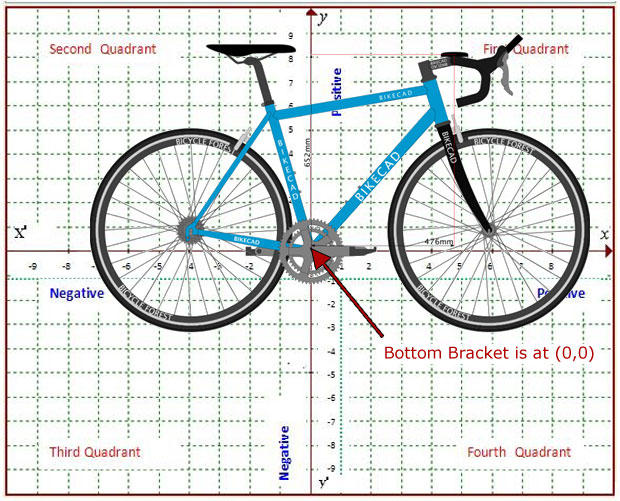
This is why the Pad Y/X metrics are important – it lets you buy a new superbike with confidence that it’s the right bike! But it doesn’t stop there. While I can’t know what Speed Concept fits you unless I know your Pad Y/X, if I do know your Pad Y/X I can also prescribe mortal bikes that will fit you. And, maybe, I can find out more about you if I know your Pad Y/X and a few other details.
Pad Y and X are usually measured in millimeters, which are tenths of a centimeter. My Pad Y/X is about 640mm and 505mm respectively. This means my armrest pads sit 640mm above the BB and about 505mm I front of it. If you overlay a bike on a Cartesian coordinate system, like in the image above, and the bottom bracket is at (0,0) you can identify a place in space based in its height and length. The top of the frame’s head tube? The X and Y to this are called Stack and Reach. Where the handlebar passes through the stem? That’s HY and HX. The height and length from the BB to the pads? That’s Pad Y and X.
I can place a dot right at the place that’s 640mm above the BB and 505mm in front of it, that is, 640mm up the Y axis and 505mm out the X axis, and that point, that dot, that’s where my armrest sits in space. What is your Pad Y and X? Let’s say it’s 675mm up the Y axis and 475mm out the X axis. I can place a dot there as well. Now there are 2 dots on my Cartesian graph.
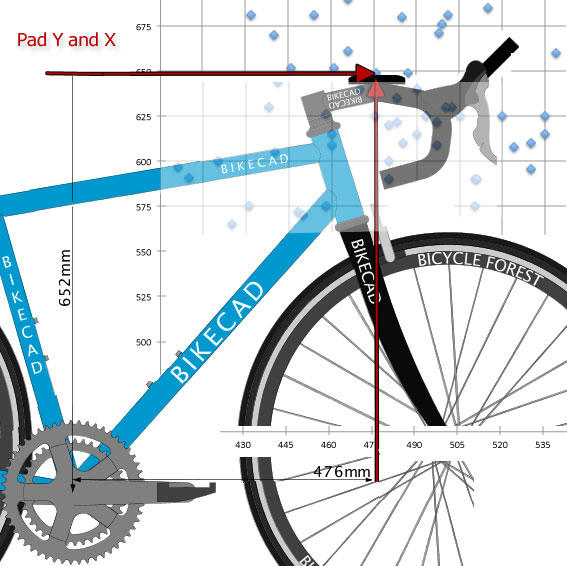
So far I think I have about 70 or 75 Slowtwitchers who’ve given me the Pad Y and X measures. They appear as so many dots. What can I learn from these dots. Well, if I’m a bike maker I can learn how to design my bikes so that they fit all the places where those dots reside. But this presents me with a conundrum. Do I assume those dots are where they should be? Should I stipulate that you all are fitted correctly to your bikes?
I polled you all recently. Exactly half of you said that your bike is about right, geometrically. The rest of you said your bike is too tall or not tall enough or too stretched or too constricted, lengthwise. I think too tall and not long enough means about the same (because if your bike was longer and would be too tall), and that’s 26 percent of you. Only half as many of you think your bike is too long or low. That’s why I recently wrote an article called Tri Bikes are Too Tall.
Now, let me compare this to another poll I took of you all, where 65 percent of you said you’re relatively happy with your position. The great majority of you who are unhappy feel you are too high; that you could be lower. Therefore, maybe the dots representing all your positions are not an entirely trustworthy dataset for bike makers.
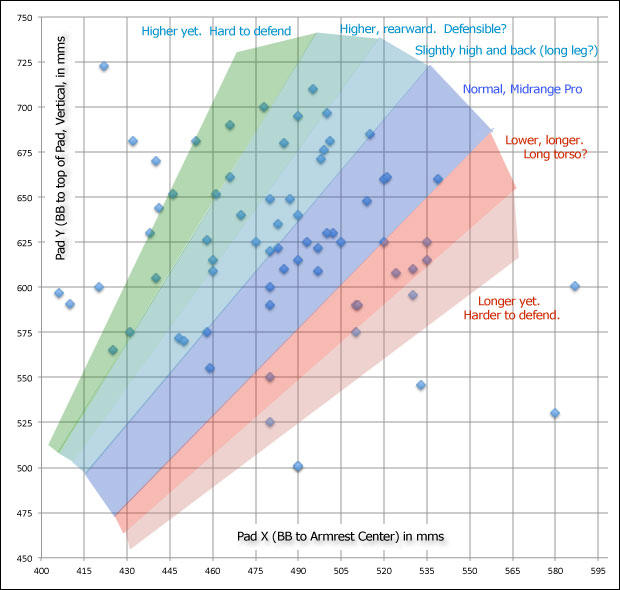
I’ve written a set of articles so far that identify clusters of dots on this graph and prescribed the bikes for you. These prescriptive analyses will continue. But the chart above, we’ll also dive deeper into this question of whether all your dots are where they should be. Should you go to a professional fitter to check your position? A lot of you have ended up in the positions you have because of your trip to a professional fitter. We, at F.I.S.T., are going to address, this year, ardently and aggressively, and publicly, the state of the bike fit industry because so many of you are ending up in unoptimized positions.
Just, the more we understand what today's important bike fit terms are, what they mean, how they’re used, then maybe we can make some progress. We’re just warming up with articles that will repeatedly refer to data presented on Cartesian graphs, so it seemed appropriate to stop here and make sure all of you understood the point of these Cartesian data fields.


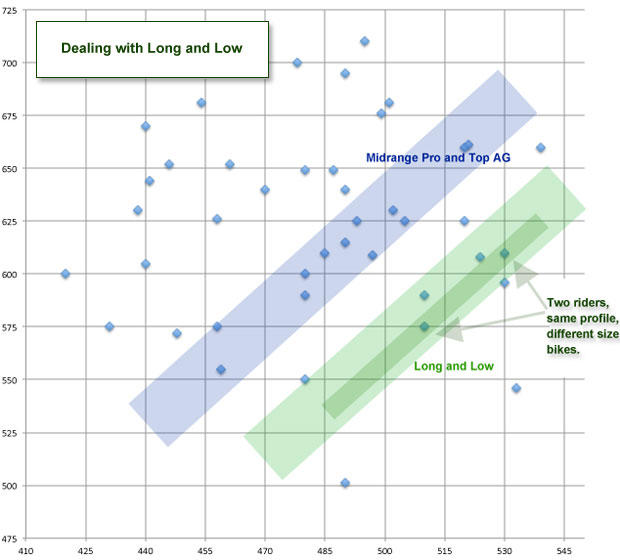
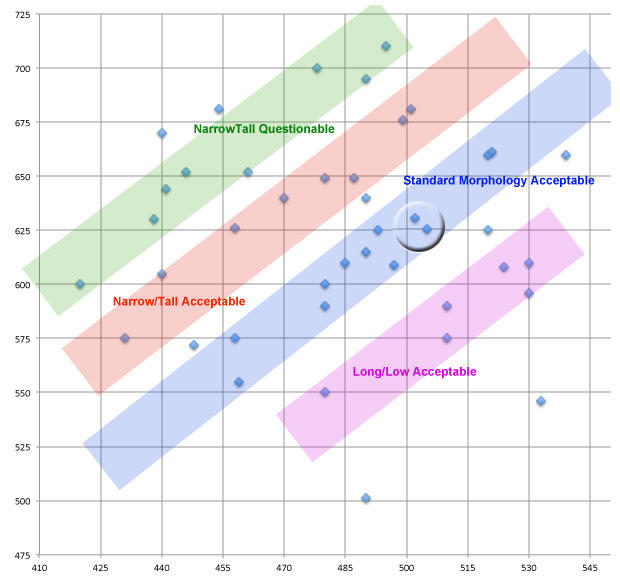
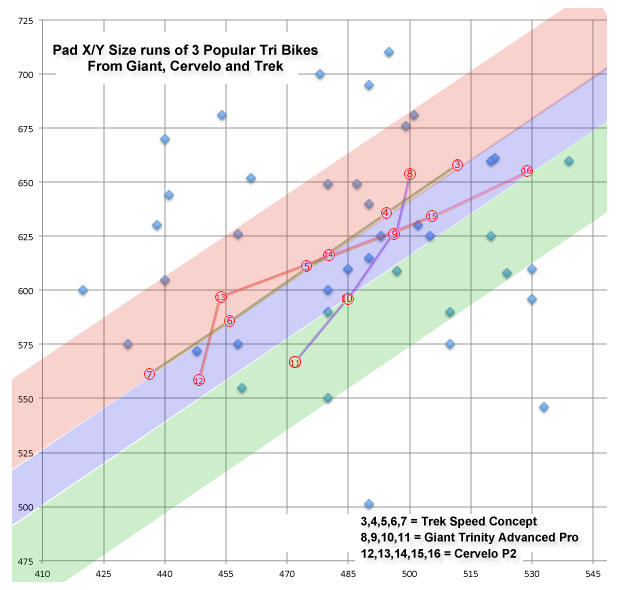
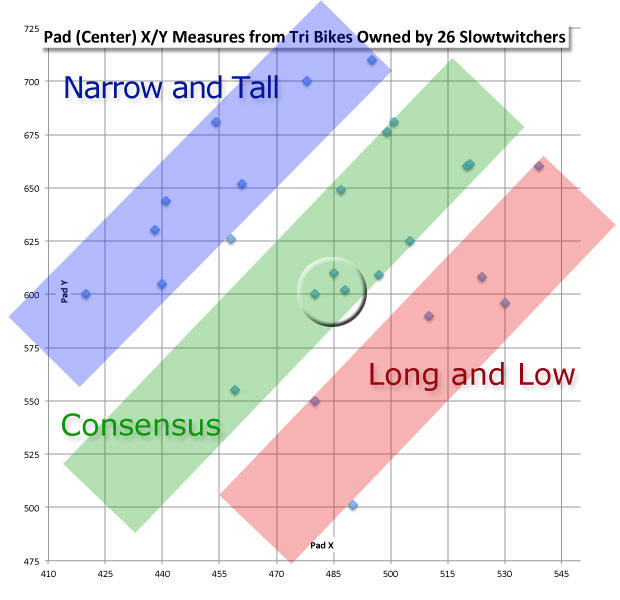
Start the discussion at slowtwitch.northend.network